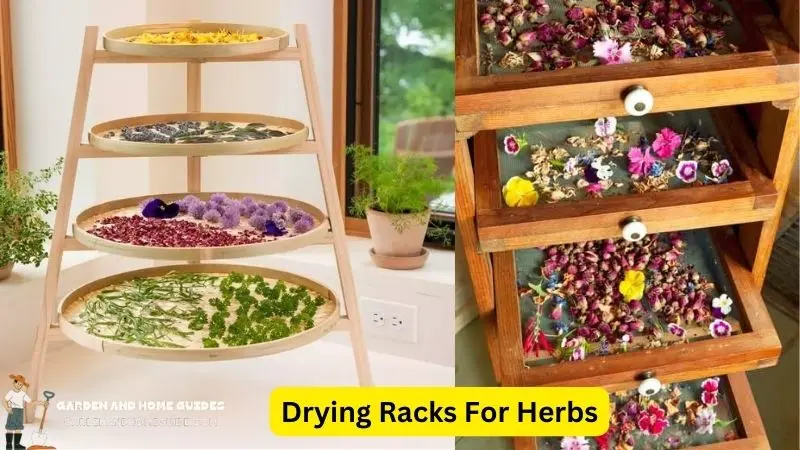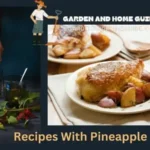Tree Care
Drying Racks For Herbs
The aroma of fresh herbs wafting through the kitchen is a sensory delight, a promise of culinary magic waiting to be unleashed. But what happens when the harvest is abundant, and the season for fresh herbs fades?
The answer lies in the art of drying, a process that allows us to preserve the vibrant flavors and therapeutic properties of our beloved herbs for months to come. While commercial drying racks are readily available, crafting your own drying rack offers a unique opportunity to personalize this essential kitchen tool, adding a touch of rustic charm and a sense of accomplishment to your culinary journey.
Let’s learn more about drying racks for herbs with gardenandhomeguide.com in the article below!
Why Make Your Own Drying Rack?
The allure of crafting a drying rack for herbs goes beyond mere practicality. It’s an invitation to connect with the earth, to transform a simple wooden frame into a functional work of art. The process itself is meditative, allowing us to slow down, appreciate the beauty of natural materials, and engage in a hands-on activity that fosters a deeper connection with our food.
The Advantages Of Homemade Drying Racks For Herbs:
- Customization: A homemade drying rack can be tailored to your specific needs, accommodating different herb varieties, sizes, and quantities. You can choose the dimensions, materials, and design to perfectly complement your kitchen aesthetics.
- Cost-effectiveness: Compared to commercially available drying racks, homemade options are often more budget-friendly, especially if you utilize readily available materials like reclaimed wood or bamboo.
- Sustainability: By using recycled or repurposed materials, you can minimize your environmental footprint and contribute to a more sustainable lifestyle.
- Unique and Personal: A homemade drying rack becomes a unique piece of kitchen decor, reflecting your personality and adding a touch of handcrafted charm to your culinary space.
Simple Drying Rack Designs:
Here are a few simple yet effective drying rack designs to inspire your creativity:
- The Classic Frame: This design consists of two parallel wooden frames connected by vertical slats. The frames provide structural support, while the slats create spaces for hanging herbs.
- The Ladder Rack: This design resembles a small ladder with horizontal rungs for hanging herbs. It’s compact and easy to store.
- The Hanging Rack: This design is suspended from the ceiling or a wall using hooks or chains. It’s ideal for small spaces and allows for easy access to the drying herbs.
How To Make Simple Drying Racks For Herbs? Detailed Instruction
Materials and Tools:
Before embarking on your drying rack creation, gather the necessary materials and tools:
- Wood: Choose sturdy wood like cedar, redwood, or pine for its durability and resistance to moisture. Reclaimed wood adds a rustic charm and reduces waste.
- Screws or Nails: Use screws or nails that are appropriate for the chosen wood type.
- Saw: A handsaw or power saw is needed to cut the wood to the desired dimensions.
- Drill: A drill with appropriate drill bits is essential for creating holes for the screws or nails.
- Sandpaper: Smooth out any rough edges and create a polished finish.
- Optional: Stain or paint to enhance the appearance and protect the wood.
Construction Process:
- Measure and Cut: Determine the desired dimensions of your drying rack and cut the wood accordingly.
- Assemble the Frames: Connect the wooden pieces to create the frames using screws or nails. Ensure the frames are sturdy and well-aligned.
- Attach the Slats: Attach the vertical slats to the frames, creating spaces for hanging herbs. The spacing between the slats should allow for adequate air circulation.
- Sand and Finish: Sand the entire rack to smooth out any rough edges and create a polished finish. Apply stain or paint, if desired.
- Optional: Add Hooks or Hanging Points: If you’re creating a hanging rack, add hooks or chains to the top of the frame for suspension.
Tips for Drying Herbs:
Harvest at the Optimal Time:
Begin by harvesting your herbs early in the morning, shortly after the dew has dried. This is when the essential oils in the herbs are at their highest concentration, ensuring maximum flavor and potency. The morning harvest captures the peak freshness and aromatic qualities of the herbs.
Clean and Prepare the Herbs:
Once harvested, gently wash the herbs to remove any dirt or debris. Be careful not to bruise the leaves as this can affect their flavor and efficacy. After washing, inspect each sprig carefully, removing any damaged or wilted leaves to ensure that only the healthiest parts are retained for drying.
Tie or Bundle the Herbs:
Gather the herbs into small bundles, tying the stems together with a piece of string or twine. Make sure the bundles are not too large, as this can impede air circulation and slow the drying process. Alternatively, you can hang individual sprigs from a drying rack if you prefer.
Ensure Proper Air Circulation:
Place the herb bundles in an area where there is ample air circulation. Proper airflow is crucial in preventing mold and mildew from developing on the drying herbs. You might consider using a fan to enhance air movement if the natural ventilation is insufficient.
Control Darkness and Humidity:
Choose a drying location that is dark, dry, and well-ventilated. Exposure to direct sunlight can degrade the herbs’ essential oils and color, so a dark environment is ideal. Maintaining low humidity levels is equally important, as high moisture can lead to mold growth and spoilage.
Monitor Dryness Regularly:
Regularly check the herbs to determine their dryness. They are ready when the leaves become brittle and crumble easily between your fingers. Depending on the type of herb and the drying conditions, this process can take several days to a few weeks. Ensuring they are thoroughly dried is essential to prevent any residual moisture that could cause mold during storage.
By following these steps, you can effectively harvest and dry your herbs, preserving their flavor, aroma, and nutritional value for future culinary and medicinal use.
Why Grow Your Own Herbs?
The act of growing your own herbs is a rewarding experience that goes beyond simply adding flavor to your meals. It’s a journey of self-sufficiency, a connection to nature, and a commitment to healthy living.
Benefits of Growing Your Own Herbs:
Fresh herbs provide not only an unmatched burst of flavor and aroma, elevating the taste profiles of your culinary creations, but also bring with them a plethora of health benefits. Rich in vitamins, minerals, and antioxidants, these herbs contribute significantly to your overall well-being.
In addition to their nutritional value, cultivating your own herbs proves to be a cost-effective alternative to purchasing them pre-packaged from grocery stores. This practice not only saves money but also promotes sustainability by reducing food miles and cutting down on packaging waste.
Beyond their culinary and economic advantages, herbs are known for their therapeutic properties, offering natural remedies for a wide range of ailments. This dual functionality of herbs as both food and medicine highlights their holistic value in everyday life.
Moreover, engaging in herb gardening fosters a profound connection to nature. It provides an opportunity to immerse oneself in the natural world, fostering peace, tranquility, and a deeper appreciation for the environment.
Thus, incorporating fresh herbs into your daily routine not only enhances your culinary experiences but also enriches your health, finances, and connection to the world around you.
Conclusion:
Creating a drying rack for herbs is a rewarding endeavor that combines practicality with creativity. It allows you to preserve the bounty of your garden, enjoy the vibrant flavors of fresh herbs year-round, and embrace a more sustainable and fulfilling lifestyle.
By growing your own herbs, you take control of your food source, connect with nature, and reap the benefits of healthy, flavorful ingredients. So, gather your tools, embrace the art of drying, and embark on a culinary journey that celebrates the beauty and bounty of the herb garden.






